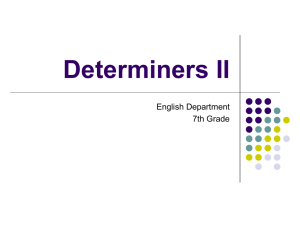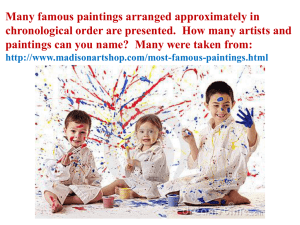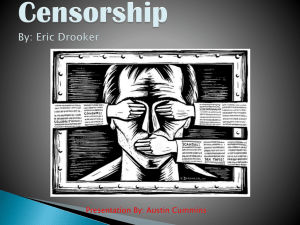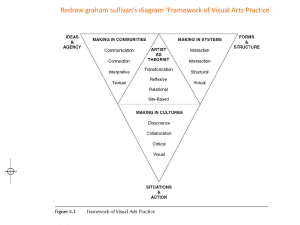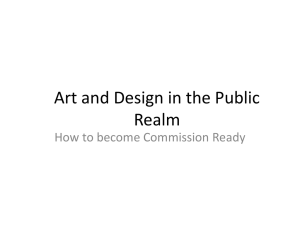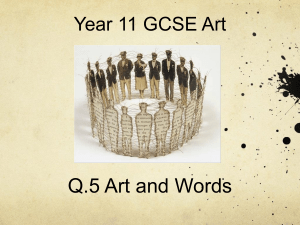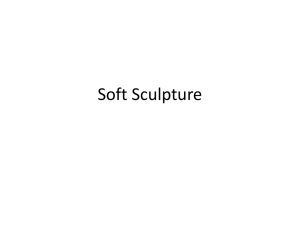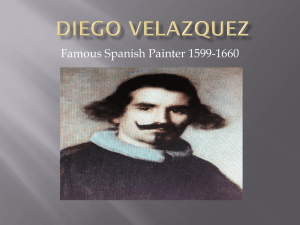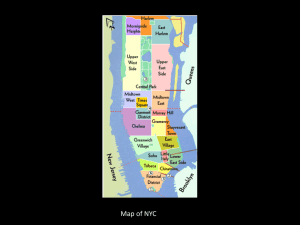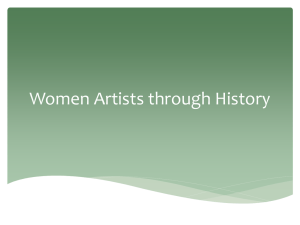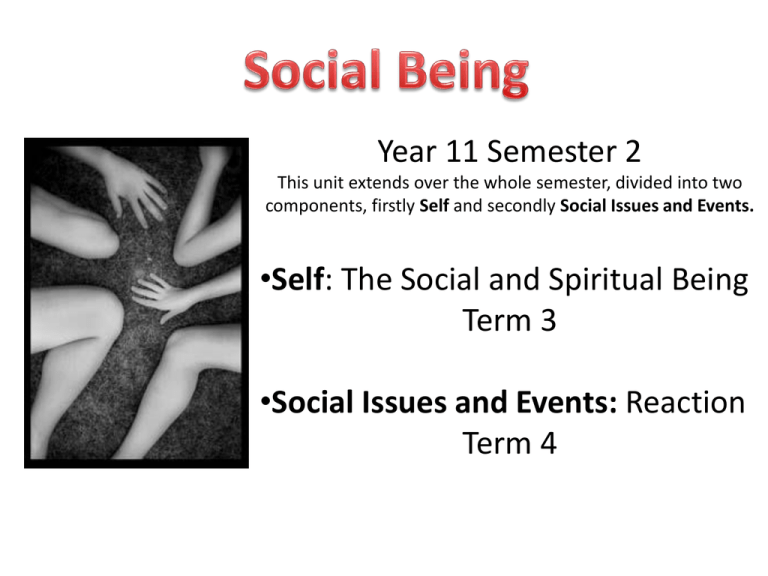
Year 11 Semester 2
This unit extends over the whole semester, divided into two
components, firstly Self and secondly Social Issues and Events.
•Self: The Social and Spiritual Being
Term 3
•Social Issues and Events: Reaction
Term 4
Concept: The aim of this unit ‘Self’ is to represent your personal identity through artworks,
creating a conceptual self- portrayal.
Concept- Main Idea
Focuses:
•Physical Appearance
•Trauma or Illness
•Relationships
•Genetics
•Religion/Spirituality
•Philosophy (values)
•Gender
•Ethnicity/ Nationality
•Politics
•Psychological
Focus – area of concern
Context:
•Personal
•Sociocultural
•Geographic
•Technological
•Historical
Context – viewpoint
Self – a conceptual self portrayal .
This unit investigates an individual’s perception of their
identity and place within society. It challenges you to
collect physical and psychological (of the mind) memorabilia
of your own existence and personal identity and then to
explore representing this personal existence. Conceptual art
is an art form in which the artist's intent is to convey an idea
rather than to create an art object. This unit explores the
strange and wonderful world of postmodernism and
conceptual art. To help you choose the context and focus for this topic it will be necessary to
researching the way other artists - personal, historical, technological or sociocultural background influence the way they depict themselves. Artists have long
explored their identities through representing their likeness in self-portraitures.
This unit ‘Self’- however, goes beyond the representational portrait into a more
conceptual framework. Contemporary art practices examine personal identity by
exploring focuses related to oneself or aspects of oneself. This can be a starting
point for exploring larger issues.
The second part of this unit ‘Social Issues and Events’ challenges you to move
beyond personal representation onto works that communicate more general
and universal concepts dealing with humanity’s existence.
A focus is a concentrated effort or attention on a
particular thing, an area of concern, or investigation.
Some of the focuses related to Personal identity within
society may include the effect of illness or trauma on
one's body and mind, the individual's relationship within
associated groups, cultural or ethnic characteristics,
psychological profile, genetic individuality, sexuality and
gender, religious beliefs, person philosophies and/ or
the evidence of an individual's existence.
Listed are a selection of Focuses and their definitions
(you may choose something not on this list however it must be negotiated with your teacher)
•Physical Appearance - relating to the body, rather than to the mind, the
soul, or the feelings
•Trauma or Illness - an extremely distressing experience that causes severe
emotional shock and may have long-lasting psychological or physical effects
•Relationships –within a community, family, school, sport, work or virtual
networks (Face book, My Space)
the connection between two or more people or groups and their
involvement with one another
•Genetics – Mind and Body
Physical traits- inherited bodily qualities
Psychological - relating to the mind or mental processes.
•Religion/Spirituality- beliefs and opinions concerning the existence, nature
and worship of God and divine involvement in the universe and human life.
Relating to the soul or spirit, usually in contrast to material things.
•Psychological Profile – same as within genetic
•Philosophy (values)- concerned with the study of the nature of life and reality, or of
related areas such as ethics, logic, or metaphysics the branch of philosophy concerned
with the study of the nature of being and beings, existence, time and space, and
causality. concerned with or given to thinking about the larger issues and deeper
meanings in life and events
•Gender - the sex of a person or organism, or of a whole category of people or
organisms
•Ethnicity / Nationality – background, ancestry
•Evidence of Existence -something that gives a sign or proof of the state of being
real, actual, or current, rather than imagined, invented, or obsolete. The items that
represent the presence or occurrence of something/someone in a particular place or
situation.
•Political Views - activities associated with government
The context can be thought of as a lens that you view your focus through
•Personal - relating to a specific person rather than anyone else - their life, their opinion
•Sociocultural - relating to or involving cultural and social factors
Society -The totality of social relationships among humans. A group of humans broadly distinguished
from other groups by mutual interests, participation in characteristic relationships, shared
institutions, and a common culture.
Culture - The totality of socially transmitted behaviour patterns, arts, beliefs, institutions, and all
other products of human work and thought. These patterns, traits, and products considered as the
expression of a particular period, class, community, or population: Australian Teen culture; Japanese
culture; the culture of poverty. The predominating attitudes and behaviour that characterize the
functioning of a group or organization.
•Geographical – place on Earth; your physical environment
•Technology - the study, development, and application of devices, machines, and techniques for
manufacturing and productive processes
•Historical - existing, happening, or relating to the past.
This semester you will be transitioning from teacher directed
simple making /appraising tasks to more complex and openended self directed work. By the end of term 4 in year 11 you are
expected to have created a Body of Work.
A body of works is a collection of investigative artpieces leading
to a single or “major” work/s.
The body of work shows your progress through the inquiry
learning model (researching, developing, resolving, reflecting), as
you integrates the components of the course (concept, focus,
context, media area(s) and visual language and expression).
You should be basing your artist practice on the Inquiry Learning Model
Although conceptual art has overtaken
figuration (art which attempts to represent
something in the physical world) in terms of
fashionability, the self-portrait has not been
ignored by the leading artists within the
movement. In fact self-portraits made under the
conceptual banner can be even more frank and
revelatory than their figurative counterparts.
Although not necessarily thought of as selfportraits in the traditional sense, works which
may at first appear abstract and inaccessible can
contain an autobiographical content if not an
actual physical likeness. For example, the work
‘Bed’ by Tracey Emin, featuring an installation
recreating the artists bedroom complete with
unwashed plates, cigarette butts and dirty
laundry, offers us more of an insight into the life
and mind of the artist than a likeness of her face
would provide.
Bed by Tracy Emin, 1998.
Art Examples for This Concept
Concept: Personal Identity
Focus: Evidence of Existence
Context: Personal
Concept: Personal Identity
Focus: Ethnicity / Nationality
Context: Sociocultural and Historical
Moffatt is an indigenous Australian born in
1960 who grew up in foster care in Brisbane
– this piece intends to portray a
melodramatic (movie poster imagery)
juxtaposition of characters to represents the
fakeness of Australian identity.
Tracey Moffatt 'Something more #1' 1989
direct positive colour photograph Collection of
the National Gallery of Australia
Concept: Personal Identity
Focus: Political
Context: Sociocultural and Historical
Artist Self-Portrait
of/by Victor Ehikhamenor
Concept: Personal Identity
Focus: Trauma
Context: Personal
Joseph Beuys
How to Explain Pictures to a Dead Hare
1965 performance art, Dusseldorf.
Frida Kahlo (Mexican, 1907-1954).
The Broken Column, 1944. Oil on canvas (40 x 30.5 cm).
Collection Museo Dolores Olmedo Patiño, Mexico City.
Concept: Personal Identity
Focus: Gender
Context: Sociocultural
Tracey Emin
“Everyone I have Ever Slept With 1963 -1995”
1995 Assemblage 122 x 245 x 215 cm
Concept: Personal Identity
Focus: Physical Appearance
Context: Technology (anti)
Chuck Close
Self-Portrait. 1997.
Oil on canvas, 102 x 84" (259 x 213.4 cm).
Private collection, New York.
Concept: Personal Identity
Focus: Gender
Context: Sociocultural
Untitled # 132 and #138, Cindy Sherman, 1984.
With bright light and high-contrast color, Sherman focuses on the consequences of society’s
stereotyped roles for women — in this case as a victim of fashion — rather than upon the
roles themselves
By turning the camera on herself, Cindy Sherman has built a name as one of the most respected
photographers of the late twentieth century. Although, the majority of her photographs are
pictures of her, however, these photographs are most definitely not self-portraits. Rather,
Sherman uses herself as a vehicle for commentary on a variety of issues of the modern world:
the role of the woman, the role of the artist and many more.
Ben Quilty,
Self portrait after Madrid, 2008.
Oil and oil bar on linen,
214 × 183 cm.
CONCEPTUAL FRAMEWORK: WORLD
Ben Quilty’s world is that of young Australian male culture. He grew up in the outer northern suburbs of
Sydney. He chooses subjects that are local and familiar to him. Quilty sets out to represent the things that
dominate so many young men’s lives: their cars and the ritual of ‘getting smashed’. He uses large images of
Torana cars, human skulls with dangling cigarettes and heads of ugly drunken men—sometimes his friends,
and sometimes even himself.
ARTIST FRAMES: SUBJECTIVE
Quilty is a figurative artist who wants to express his feelings and personal experiences in paintings on a large
scale. He applies thick oil paint onto the canvas in a way that is rapid and aggressive, but also skillful.
ARTWORK FRAMES: SUBJECTIVE
Self portrait after Madrid is a large, confronting, unflattering image of the artist’s head shown against the empty
background of the canvas. Light shines from underneath so that the eyes appear haunted and the mouth is
open as if to cry out.
PRACTICE: IDEAS
The idea behind this self portrait was to express deep feelings. The artist had recently visited the Prado
Museum in Madrid, home to many of Spain’s finest artists, including Velasquez and Goya. Quilty says he was
overwhelmed by the emotional depth of the works at the Prado Museum, ranging from the joy of life to horrors
of war. He says he wanted to depict himself in this portrait as though he was ‘gazing into the fires of hell’.
PRACTICE: ACTIONS
This image of Quilty’s face is vibrant and textured. The oil paint is mixed with so much impasto medium that it
stands up in a 3-D fashion from the surface of the canvas. The paint is applied using cake-decorating tools
rather than paintbrushes. Even though he applies the paint in broad strokes, the artist can skilfully model his
own likeness. Quilty says he is energised by his ‘almost violent’ way of painting because it allows him to get
images out of his head and onto the canvas very quickly.
AUDIENCE
Ben Quilty’s paintings are disturbing, and they challenge an audience with their huge scale. Up close the paint
has the appearance of being slapdash, but the further back the audience stands from the works, the more
realistic they become. Quilty has developed a large audience across Australia and is exhibited in major art
galleries. He is also developing a more international audience, especially in Europe.
www.benquilty.com www.janmurphygallery.com.au www.grantpirrie.com
Jason Mecier
Pink
3-D mosaic- mixed media
61 × 89 cm.
Jason Mecier
CRITICAL AND HISTORICAL INTERPRETATIONS
CONCEPTUAL FRAMEWORK:
WORLD
The world of Jason Mecier is that of contemporary American pop culture.
ARTIST FRAMES: STRUCTURAL
Mecier lives and works as an illustrator in San Francisco. He is a self-taught artist who specialises in 3-D
mosaic portraits of famous people.
ARTWORK FRAMES: STRUCTURAL
Like all Mecier’s portraits, Pink is a one-of-a-kind, handcrafted mosaic. It has been reproduced as the poster
for one of Pink’s concerts in the USA (United States of America). It uses a traditional portrait pose, showing
the head and shoulders of the subject, pop/rock singer Pink. The artist uses a kitsch style so that Pink is
presented as an icon of popular culture.
PRACTICE: IDEAS
Mecier explores ideas about celebrity and modern ‘throwaway’ consumer society. Instead of using paint or a
photograph, he assembles his portraits using the personal possessions of
his wealthy and famous subjects. He bases the portraits on images borrowed from posters, magazines or
television. The artist’s raw materials are found objects—discarded junk that he collects as well as the
personal rubbish donated by the stars themselves. In Pink’s portrait, Mecier has put great effort into using
just the right objects to express not only Pink’s appearance, but also her inner world.
PRACTICE: ACTIONS
This portrait of Pink is assembled in a careful and detailed fashion to create an almost photographically real
portrait made from objects sent to him from Pink’s junk drawer. This includes pink and white hair and beauty
products, ribbons and rope, plastic cutlery and cotton buds. These symbolise the softer feminine aspects of
her personality. These contrast with the darker, harder qualities of the discarded metal objects—safety pins,
zippers, locks, keys, coins, nuts and bolts—he also uses.
AUDIENCE
The artist’s choice of celebrities as his subject matter appeals to a wide audience. His work has been
exhibited internationally and printed in many publications.
www.jasonmecier.com www.theispot.com/artist/jmecier

